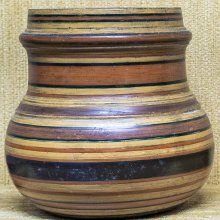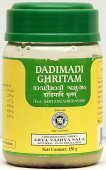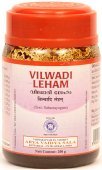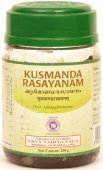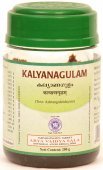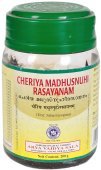Dhanya, Dhanyā, Dhānya, Dhānyā, Dhaṇya: 35 definitions
Introduction:
Dhanya means something in Buddhism, Pali, Hinduism, Sanskrit, Jainism, Prakrit, the history of ancient India, Marathi, Hindi, biology. If you want to know the exact meaning, history, etymology or English translation of this term then check out the descriptions on this page. Add your comment or reference to a book if you want to contribute to this summary article.
Alternative spellings of this word include Dhany.
Images (photo gallery)
In Hinduism
Purana and Itihasa (epic history)
Source: Wisdom Library: Varāha-purāṇaDhanyā (धन्या) is the name of a beautiful damsel (kanyā), with black curly hair and red lips, according to the Varāhapurāṇa chapter 92. Dhanyā (and other innumerable ladies) arose out of the agitation of Vaiṣṇavī while she was doing penance at Viśālā. For these young women, Vaiṣṇavī created the city Devīpura, containing numerous mansions with golden balconies, crystal stairs and water fountains, with jewelled windows and gardens.
Vaiṣṇavī is the form of Trikalā having a red body representing the energy of Viṣṇu. Trikalā is the name of a Goddess born from the combined looks of Brahmā, Viṣṇu and Maheśvara (Śiva).
The Varāhapurāṇa is categorised as a Mahāpurāṇa, and was originally composed of 24,000 metrical verses, possibly originating from before the 10th century. It is composed of two parts and Sūta is the main narrator.
Source: archive.org: Nilamata Purana: a cultural and literary studyDhānya (धान्य) refers to “rice”, forming part of a common diet in ancient Kashmir (Kaśmīra) as mentioned in the Nīlamatapurāṇa.—Rice seems to have been the principal food of the Kaśmīrīs Its three varieties, namely, Śāli, Taṇḍula and Śyāmāka have been referred to (verses 135, 324,535, 732, 743, 781). Most of the references to the articles of diet occur in the Nīlamata in connection with the offerings made to the gods but it is not difficult to infer from them the food and drink of the common people because “what a man eats his gods eat”.
Source: archive.org: Shiva Purana - English Translation1) Dhānya (धान्य) refers to “grain”, as defined in the Śivapurāṇa 1.15. Accordingly, “a charitable gift given to a needy person yields the utmost benefit. If it is given after entreaties it yields only half the benefit. [...] Gift of food-grains (dhānya and anna) is conducive to the increase of food production”.
2) Dhānya (धान्य) refers to “grains and pulses”, which are used in the worship of Śiva, according to the Śivapurāṇa 2.1.14:—“[...] now, O excellent one, listen to the quantity of and the benefit accruing from grains and pulses (dhānya) in their use for worship of Śiva. Heaping up rice grains (taṇḍula) by way of worship causes prosperity. Six and a half prastha, and two palas of rice grains constitute a hundred thousand in number of grains. These shall be used in their unsplit form for the worship of Śiva”.
3) Dhānya (धान्य) is one of the three daughters of Svadhā who is one of the sixty daughters of Dakṣa, according to the Śivapurāṇa 2.3.2.—Accordingly, as Brahmā narrated to Nārada:—“[...] the daughter Svadhā was given to the forefathers. She had three daughters all of whom were of handsome features and virtuous forms. O excellent sage, listen to their holy names which remove obstacles and confer blessings. Menā was the eldest. Dhanyā was the middle. Kalāvatī was the youngest. All these were mentally conceived daughters of the forefathers. They were not born of the womb of Svadhā. They were conventionally considered her children. On reciting their names, men can achieve their desires”.
Dhānya was cursed by Sanatkumāra according to the Śivapurāṇa 2.3.2.—Accordingly, as Sanatkumāra said to the three sisters:—“[...] O ye three daughters of forefathers (i.e., Dhanyā), listen with pleasure to my words that will dispel your sorrow and bestow happiness on you. [...] The second daughter Dhanyā shall be the Yoginī, the wife of Janaka. Her daughter shall be Mahālakṣmī in the name of Sītā. [...] Janaka shall be blessed by Sītā born in Janaka’s race and he shall be a living liberated soul. A great Yogin, he will attain Vaikuṇṭha. [...] Ye the daughters of forefathers (i.e., Dhanyā) shall shine in heaven. By the vision of Viṣṇu your evil actions have been quelled. [...] Dhanyā’s daughter Sītā will become Rāma’s wife. Based on worldly conventions she will sport about with Rāma”.
Source: Cologne Digital Sanskrit Dictionaries: The Purana Index1a) Dhanyā (धन्या).—The Vaiśya caste of Krauñcadvīpa.*
- * Viṣṇu-purāṇa II. 4. 53.
1b) A daughter of Manas; wife of Dhruva; gave birth to a son Śiṣṭa.*
- * Matsya-purāṇa 4. 38.
2) Dhānya (धान्य).—18 kinds of corn mentioned for making gifts.*
- * Matsya-purāṇa 276. 7; 277. 11.
1) Dhānya (धान्य) refers to one of the various kinds of articles used for donation, according to the 10th century Saurapurāṇa: one of the various Upapurāṇas depicting Śaivism.—Accordingly, the tenth chapter contains the praise and classification of donations. It narrates the characteristics of proper recipients and the results of giving different kinds of articles like Bhūmi, Vidyā, Anna, Jala, Tila, Vāsa, Dīpa, Yāna, Śayyā, Dhānya, Aśva, Śāka, Indhana, Chatra, Auṣadha, Go, etc.
2) Dhānya (धान्य) refers to one of the four sons of Dhruva: the son of Uttānapāda and grandson of Manu-svāyaṃbhuva and Śatarūpā, according to the Vaṃśa (‘genealogical description’) of the Saurapurāṇa.—Accordingly, [...] Uttānapāda’s son was Dhruva who achieved the highest place of worshipping Nārāyaṇa. Dhruva had four sons—Sṛṣṭi, Dhanya, Harya and Śaṃbhu; they all were Vaiṣṇavas.

The Purana (पुराण, purāṇas) refers to Sanskrit literature preserving ancient India’s vast cultural history, including historical legends, religious ceremonies, various arts and sciences. The eighteen mahapuranas total over 400,000 shlokas (metrical couplets) and date to at least several centuries BCE.
Dharmashastra (religious law)
Source: Sacred Texts: The Grihya Sutras, Part 2 (SBE30)Dhānya (धान्य) refers to “corn with the husk”.—The taṇḍulas are the unhusked grains, piṣṭa is the ground flour. In Sanskrit a distinction is made between śasya, the corn in the field, dhānya, corn with the husk, taṇḍula, grains without husks, anna, roasted grains.

Dharmashastra (धर्मशास्त्र, dharmaśāstra) contains the instructions (shastra) regarding religious conduct of livelihood (dharma), ceremonies, jurisprudence (study of law) and more. It is categorized as smriti, an important and authoritative selection of books dealing with the Hindu lifestyle.
Ayurveda (science of life)
Dietetics and Culinary Art (such as household cooking)
Source: Shodhganga: Dietetics and culinary art in ancient and medieval IndiaDhānya (धान्य) refers to “food grains” according to the 17th century Bhojanakutūhala (dravyaguṇāguṇa-kathana), and is commonly found in literature dealing with the topics of dietetics and culinary art, also known as Pākaśāstra or Pākakalā.—The author explains the characteristics and the properties of various food grains (dhānyas).
Grains are divided into three:—
- śūkadhānya (awned grains),
- śimbīdhānya (grains with pods),
- tṛṇadhānya (grassy grains).
The section śūkadhānya includes the varieties and properties of rice (śāli), wheat (godhūma) and barley (yava). In śimbīdhānya-prakaraṇa the properties of grains with pods such as mudga (green gram), māṣa (black-gram), caṇaka (bengal gram), kalāya (field pea), tila (sesame), atasī (linseed), sarṣapa (mustard) and masūra (lentils) are explained. Tṛṇadhānya-prakaraṇa discusses the varieties and properties of grassy grains such as kaṅgu (foxtail millet), kadrava (kodo millet), śyāmāka, varaka and kurī (common millet).
Dhānya or “grains” is used to prepare oils (taila) from according to the same work.—Taila-prakaraṇa describes the properties of the oil prepared from [viz., dhānya (grains), etc.].
Cikitsa (natural therapy and treatment for medical conditions)
Source: Ancient Science of Life: Botanical identification of plants described in Mādhava CikitsāDhānya (धान्य) or Dhānyaka refers to the medicinal plant Coriandrum sativum L., and is used in the treatment of atisāra (diarrhoea), according to the 7th century Mādhavacikitsā chapter 2. Atisāra refers to a condition where there are three or more loose or liquid stools (bowel movements) per day or more stool than normal. The second chapter of the Mādhavacikitsā explains several preparations [including Dhānya] through 60 Sanskrit verses about treating this problem.
Nighantu (Synonyms and Characteristics of Drugs and technical terms)
Source: WorldCat: Rāj nighaṇṭuDhānya (धान्य) is another name for Dhānyaka, a medicinal plant identified with Coriandrum sativum Linn. or “coriander” from the Apiaceae or “umbelliferae” family of flowering plants, according to verse 6.35-37 of the 13th-century Raj Nighantu or Rājanighaṇṭu.—The sixth chapter (pippalyādi-varga) of this book enumerates ninety-five varieties of plants obtained from the market (paṇyauṣadhi). Together with the names Dhānya and Ārdraka, there are a total of sixteen Sanskrit synonyms identified for this plant.
Toxicology (Study and Treatment of poison)
Source: Shodhganga: Kasyapa Samhita—Text on Visha ChikitsaDhānya (धान्य) or “coriander seeds” and is included in a (snake) poison antidote recipe, according to the Kāśyapa Saṃhitā: an ancient Sanskrit text from the Pāñcarātra tradition dealing with both Tantra and Viṣacikitsā—an important topic from Āyurveda which deals with the study of Toxicology (Viṣavidyā or Sarpavidyā).—Gulikā refers to “herbal pills” and represents one of the modes of treatment for the venom (viṣa) of snakes (i.e., viṣacikitsā). Pills are also prepared from a combination of mud, asafoetida, garlic, pepper and coriander seeds (dhānya). The bile of peacock, goat, mongoose, cat, and boars mixed with honey administered in the form of pills also are formidable antidotes
Unclassified Ayurveda definitions
Source: archive.org: Vagbhata’s Ashtanga Hridaya Samhita (first 5 chapters)Dhānya (धान्य) refers to “grain” (or, “barley”), mentioned in verse 3.45 of the Aṣṭāṅgahṛdayasaṃhitā (Sūtrasthāna) by Vāgbhaṭa.—Accordingly, “[...] as the (humours and the gastric fire) irritate one another this way, one shall turn to all (substances) that (are) applicable to all humours and promotive of the (gastric) fire: a cathartic enema after one’s body has been purged (with a vomitive etc.), old grain [viz., jīrṇa-dhānya], prepared soups, game-meat, broths, old wine and ariṣṭa liqueur [...]”.
Note: jīrṇaṃ dhānyam (“old grain”) (that is, according to Indu’s comment on v. 20, five- or six-month-old grain) has been replaced by yaṅ-bag (“early-barley meal”) and treated as an adjunct of rasa (“soup”), with kṛta (“prepared”) having been omitted. It is not impossible that the translators had a jīrṇadhānyarasān before them.
The Tibetans distinguish barley [viz., yaṅ-bag or dhānya] into three varieties:
- early (mgyogs-nas) barley,
- late (ser-mo) barley;
- middling (che-nas) barley;
the former is called alternatively khra-ma, drug-cu-nas, or yaṅ-ma and grows ripe in about 60 days (cf. Jäschke, Dict. p. 304, s. v. nas).
Source: eJournal of Indian Medicine: Jajjaṭa’s Nirantarapadavyākhyā and Other Commentaries on the CarakasaṃhitāDhānya (धान्य) is a synonym of Dhānyaka, which refers to Coriandrum sativum Linn., and is the name of a medicinal plant mentioned in the 7th-century Nirantarapadavyākhyā by Jejjaṭa (or Jajjaṭa): one of the earliest extant and, therefore, one of the most important commentaries on the Carakasaṃhitā.—(Cf. Glossary of Vegetable Drugs in Bṛhattrayī 213, Singh and Chunekar, 1999).—(Cf. Indian Medicinal Plants 2:184, Arya Vaidya Sala, 1993-96.)

Āyurveda (आयुर्वेद, ayurveda) is a branch of Indian science dealing with medicine, herbalism, taxology, anatomy, surgery, alchemy and related topics. Traditional practice of Āyurveda in ancient India dates back to at least the first millenium BC. Literature is commonly written in Sanskrit using various poetic metres.
Jyotisha (astronomy and astrology)
Source: Wisdom Library: Brihat Samhita by VarahamihiraDhānya (धान्य) refers to “grain”, according to the Bṛhatsaṃhitā (chapter 4), an encyclopedic Sanskrit work written by Varāhamihira mainly focusing on the science of ancient Indian astronomy astronomy (Jyotiṣa).—Accordingly, “Having thus described the shape of the moon we next proceed to describe her size (generally): [...] If she should appear broad, she will increase the prosperity of the princes; if she should appear big there, will be happiness in the land, and if small, there will be abundance of that grain which men like most [i.e., priya-dhānya-kara]”.

Jyotisha (ज्योतिष, jyotiṣa or jyotish) refers to ‘astronomy’ or “Vedic astrology” and represents the fifth of the six Vedangas (additional sciences to be studied along with the Vedas). Jyotisha concerns itself with the study and prediction of the movements of celestial bodies, in order to calculate the auspicious time for rituals and ceremonies.
Shaktism (Shakta philosophy)
Source: Brill: Śaivism and the Tantric Traditions (shaktism)Dhanyā (धन्या) refers to “she who is blessed”, according to Sāhib Kaul’s Śārikāstrotra.—Accordingly, “[...] He is born in a good family, his mother is blessed (dhanyā—tasya dhanyā mātā tasmin), and he receives good wishes. He knows everything about [Śārikā,] the beloved of Śiva, who has fathomed true knowledge through devotion. My devotion to you nourishes me every day, as the rise of the full moon always nourishes the ocean. On account of the true affluence of victorious devotion to you I even ignore the excellent Lakṣmī. [...]”.

Shakta (शाक्त, śākta) or Shaktism (śāktism) represents a tradition of Hinduism where the Goddess (Devi) is revered and worshipped. Shakta literature includes a range of scriptures, including various Agamas and Tantras, although its roots may be traced back to the Vedas.
In Buddhism
Tibetan Buddhism (Vajrayana or tantric Buddhism)
Source: OSU Press: Cakrasamvara SamadhiDhānya (धान्य) refers to “grain”, according to the Guru Mandala Worship (maṇḍalārcana) ritual often performed in combination with the Cakrasaṃvara Samādhi, which refers to the primary pūjā and sādhanā practice of Newah Mahāyāna-Vajrayāna Buddhists in Nepal.—Accordingly, “Locanī, having a golden color, arrow and shining appearance, Māmakī, having a dark-blue color, water, grain and a bouquet (ghaṭa-dhānya-mañjarīṃ dhārī), Pāṇḍarā, having a red color, and drawing a bow and arrow, Holy goddess Ārya Tārā, having a green color and blue lotus”.

Tibetan Buddhism includes schools such as Nyingma, Kadampa, Kagyu and Gelug. Their primary canon of literature is divided in two broad categories: The Kangyur, which consists of Buddha’s words, and the Tengyur, which includes commentaries from various sources. Esotericism and tantra techniques (vajrayāna) are collected indepently.
In Jainism
General definition (in Jainism)
Source: archive.org: Jaina YogaDhānya (धान्य, “grain”) represents one of the classes of the external (bahya) division of attachment (parigraha) and is related to the Aparigraha-vrata (vow of non-attachment). Dhānya is listed in Śvetāmbara sources such as Devagupta’s Nava-pada-prakaraṇa with Laghu-vṛtti (58), and in Digambara sources such Cāmuṇḍarāya’s Caritrasāra (p. 7).
There is no unanimity on the number of varieties of dhānya: the earlier Śvetāmbaras name seven or eight sorts, Hemacandra and Siddhasena Sūri fix the figure at seventeen, whilst Devendra (and with him later writers such as Ratnaśekhara and Yaśovijaya) prefers a list of twenty-four drawn from the Daśavaikālikaniryukti. Here is Hemacandra’s list:
- vrīhi (rice),
- yava (barley),
- masūra (lentils),
- godhūma (wheat),
- mudga (the pulse, Phaseolus mungo),
- māṣa (the pulse, Phaseolus radiatus),
- tila (sesamum),
- aṇava (the grain, Panicum miliaceum),
- caṇaka (chickpeas),
- priyaṅgu (Italian millet, Panicum italicum),
- kodrava (the grain, Paspalum scrabiculatum),
- sana (hemp),
- kalāya (a kind of pulse),
- kulattha (the pulse, Dolichos uniflorus),
- makuṣṭa (the pulse, Phaseolus aconitifolius),
- śāli (rice),
- āḍhaki (the pulse, Cajanus indicus),
Dhaṇya (धण्य) participated in the war between Rāma and Rāvaṇa, on the side of the latter, as mentioned in Svayambhūdeva’s Paumacariu (Padmacarita, Paumacariya or Rāmāyaṇapurāṇa) chapter 57ff. Svayambhū or Svayambhūdeva (8th or 9th century) was a Jain householder who probably lived in Karnataka. His work recounts the popular Rāma story as known from the older work Rāmāyaṇa (written by Vālmīki). Various chapters [mentioning Dhaṇya] are dedicated to the humongous battle whose armies (known as akṣauhiṇīs) consisted of millions of soldiers, horses and elephants, etc.
Source: HereNow4u: Jain Dharma ka Maulika Itihasa (2)Dhanya (धन्य) is the father of Śubhadatta.—[...] The ‘Śrī Pāsanāha Cariyaṃ’ gives the following description of Lord Pārśvanātha’s Gaṇadharas (principal disciples).—“[...] Śubhadatta: He was the first Gaṇadharas of Lord Pārśvanātha. He was the resident of Kṣemapurī city. His father's name was Dhanya and mother's name was Līlāvatī. He became a śrāvaka under monk Saṃbhūta. After the death of his parents he became disinclined. He heard the sermon of Lord Pārśvanātha at Āśramapada garden at the 1st Samavaśaraṇa and became a mendicant and the first Gaṇadhara”.

Jainism is an Indian religion of Dharma whose doctrine revolves around harmlessness (ahimsa) towards every living being. The two major branches (Digambara and Svetambara) of Jainism stimulate self-control (or, shramana, ‘self-reliance’) and spiritual development through a path of peace for the soul to progess to the ultimate goal.
India history and geography
Source: Cologne Digital Sanskrit Dictionaries: Indian Epigraphical GlossaryDhānya.—cf. sa-hiraṇya-dhānya-praṇaya-pradeya (IE 8-5); pro- duce of the fields, a share of which was payable to the king or landlord; cf. dhāny-ādāya. Note: dhānya is defined in the “Indian epigraphical glossary” as it can be found on ancient inscriptions commonly written in Sanskrit, Prakrit or Dravidian languages.

The history of India traces the identification of countries, villages, towns and other regions of India, as well as mythology, zoology, royal dynasties, rulers, tribes, local festivities and traditions and regional languages. Ancient India enjoyed religious freedom and encourages the path of Dharma, a concept common to Buddhism, Hinduism, and Jainism.
Biology (plants and animals)
Source: Wisdom Library: Local Names of Plants and DrugsDhanya in the Sanskrit language is the name of a plant identified with Oryza sativa L. from the Poaceae (Grass) family. For the possible medicinal usage of dhanya, you can check this page for potential sources and references, although be aware that any some or none of the side-effects may not be mentioned here, wether they be harmful or beneficial to health.
Source: Google Books: CRC World Dictionary (Regional names)1) Dhanya in India is the name of a plant defined with Coriandrum sativum in various botanical sources. This page contains potential references in Ayurveda, modern medicine, and other folk traditions or local practices It has the synonym Coriandrum testiculatum M. Bieb. (among others).
2) Dhanya is also identified with Oryza sativa It has the synonym Oryza sativa var. elongata Desv. (etc.).
Example references for further research on medicinal uses or toxicity (see latin names for full list):
· Cytologia (1991)
· Landwirthschaftliche Flora (1866)
· Les Figures des Plantes et Animaux d'Usage en Medecine (1764)
· The Flora of British India (1896)
· Proceedings of the Indian Science Congress Association (1976)
· Revue internationale de botanique appliquée et d’agriculture tropicale
If you are looking for specific details regarding Dhanya, for example side effects, chemical composition, health benefits, extract dosage, pregnancy safety, diet and recipes, have a look at these references.

This sections includes definitions from the five kingdoms of living things: Animals, Plants, Fungi, Protists and Monera. It will include both the official binomial nomenclature (scientific names usually in Latin) as well as regional spellings and variants.
Languages of India and abroad
Marathi-English dictionary
Source: DDSA: The Molesworth Marathi and English Dictionaryḍhāṇyā (ढाण्या).—a (ḍhāṇa) Extremely sout--a fruit. 2 Spotted--a serpent, a leopard &c.
--- OR ---
dhanya (धन्य).—a (S) Blessed, happy, beatus; that has attained or accomplished the end of his existence or the object of his desires.
--- OR ---
dhanya (धन्य).—interj Bravo! noble! capital! well done! dhanya vāṭaṇēṃ in. con. To think highly of one's own self or doings.
--- OR ---
dhanya (धन्य).—f (S) Blessedness, beatification, consummated and crowned state.
--- OR ---
dhānya (धान्य).—n (S) pop. dhāna n Corn or grain gen. and, by preeminence, rice (rice in its husk). 2 In the navarātra some grains of rice or wheat are sow in an little earth which is put around dēvī, or in caitra around gaurī. These grains, when grown, are called dhāna. 3 Blades of corn stuck in the turban at the dasarā. dhānyapalālanyāya The law of the corn and its straw. Conquer the king and you conquer his subjects; accomplish or acquire a matter and you attain all it sustains or involves.
Source: DDSA: The Aryabhusan school dictionary, Marathi-Englishḍhāṇyā (ढाण्या).—a very sour. Spotted.
--- OR ---
dhanya (धन्य).—a Blessed, happy. interj Bravo! well done! dhanya vāṭaṇēṃ in. con. To think high- ly of one's own self or doings.
--- OR ---
dhānya (धान्य).—n dhāna n Corn or grain gen.; and (by pre-eminence,) rice.
Marathi is an Indo-European language having over 70 million native speakers people in (predominantly) Maharashtra India. Marathi, like many other Indo-Aryan languages, evolved from early forms of Prakrit, which itself is a subset of Sanskrit, one of the most ancient languages of the world.
Sanskrit dictionary
Source: DDSA: The practical Sanskrit-English dictionaryDhanya (धन्य).—a. [dhanaṃ labdhā-yat]
1) Bestowing or conferring wealth; धन्यं यशस्यं पुत्रीयमायुष्यं विजयावहम् (dhanyaṃ yaśasyaṃ putrīyamāyuṣyaṃ vijayāvaham) Mahābhārata (Bombay) 1.67. Manusmṛti 3.16; धन्यानि शास्त्राण्यवेक्षेत (dhanyāni śāstrāṇyavekṣeta) 4.19.
2) Wealthy, rich opulent.
3) Blessed, fortunate, lucky, happy; धन्यं जीवनमस्य मार्गसरसः (dhanyaṃ jīvanamasya mārgasarasaḥ) Bv.1.16;4.37; धन्या केयं स्थिता ते शिरसि (dhanyā keyaṃ sthitā te śirasi) M.1.1.
4) Excellent, good, virtuous; धन्योऽसि कृतकृत्योऽसि पावितं ते कुलं त्वया । यदविद्याबन्धमुक्त्या ब्रह्मीभवितु- मिच्छसि (dhanyo'si kṛtakṛtyo'si pāvitaṃ te kulaṃ tvayā | yadavidyābandhamuktyā brahmībhavitu- micchasi) || Vivekachūdāmaṇi.
5) Wholesome, healthy; (idaṃ pāyasaṃ) प्रजाकरं गृहाण त्वं धन्यमारोग्यवर्धनम् (prajākaraṃ gṛhāṇa tvaṃ dhanyamārogyavardhanam) Rām.1.16.19.
-nyaḥ 1 A lucky or blessed man, a fortunate being; धन्यास्तदङ्गरजसा मलिनीभवन्ति (dhanyāstadaṅgarajasā malinībhavanti) Ś.7.17; Bhartṛhari 1.41; धन्यः कोऽपि न विक्रियां कलयते प्राप्ते नवे यौवने (dhanyaḥ ko'pi na vikriyāṃ kalayate prāpte nave yauvane) 1.72.
2) An infidel, an atheist.
3) Name of a spell.
4) A source of wealth; धन्यानामुत्तमं दाक्ष्यं धनानामुत्तमं श्रुतम् (dhanyānāmuttamaṃ dākṣyaṃ dhanānāmuttamaṃ śrutam) Mahābhārata (Bombay) 3.313.74.
-nyā 1 A nurse.
2) Coriander.
3) Myrobalan; L. D. B.
-nyam 1 Wealth, treasure.
2) Coriander.
--- OR ---
Dhānya (धान्य).—[dhāne poṣaṇe sādhu yat]
1) Grain, corn, rice (for the distinction between sasya, dhānya, taṇḍula and anna see under taṇḍula). सस्यं क्षेत्रगतं प्रोक्तं सतुषं धान्यमुच्यते (sasyaṃ kṣetragataṃ proktaṃ satuṣaṃ dhānyamucyate).
2) Coriander.
3) A measure equal to four sesamum seeds.
Derivable forms: dhānyam (धान्यम्).
--- OR ---
Dhānyā (धान्या).—Coriander.
See also (synonyms): dhānyāka.
Source: Cologne Digital Sanskrit Dictionaries: Shabda-Sagara Sanskrit-English DictionaryDhanya (धन्य).—mfn.
(-nya-nyā-nyaṃ) 1. Fortunate, well fated, lucky. 2. Good, virtuous. m.
(-nyaḥ) 1. An infidel, an atheist. 2. A virtuous or fortunate man. f.
(-nyā) 1. Emblic myrobalan. 2. A nurse. 3. Coriander. n.
(-nyaṃ) Wealth. E. dhana to produce, (grain, &c.) or dhana wealth, and yat affix of fitness.
--- OR ---
Dhānya (धान्य).—n.
(-nyaṃ) 1. Corn in general, but especially rice, (Orizasativa.) 2. Coriander. 3. A measure equal to four Seasamum seeds. E. dhā to nourish (mankind), Unadi affix yat, and nuṭ augment. dhāne poṣaṇe sādhu yat .
Source: Cologne Digital Sanskrit Dictionaries: Benfey Sanskrit-English DictionaryDhanya (धन्य).— i. e. dhana + ya, I. adj. 1. Bringing wealth, [Mānavadharmaśāstra] 4, 19. 2. Auspicious, Mahābhārata 8, 3606. 3. Fortunate, Mahābhārata 13, 937. Ii. m. A kind of pell, [Rāmāyaṇa] 1, 31, 8 Gorr.
--- OR ---
Dhānya (धान्य).—i. e. dhānā + ya, n. Corn, [Mānavadharmaśāstra] 2, 55.
Source: Cologne Digital Sanskrit Dictionaries: Cappeller Sanskrit-English DictionaryDhanya (धन्य).—[adjective] having or bringing wealth, wealthy, opulent; rich in, full of (—°); auspicious, fortunate.
--- OR ---
Dhānya (धान्य).—[adjective] consisting or made of grain or corn; [neuter] sgl. & [plural] corn i.[grammar], p. vant†.
Source: Cologne Digital Sanskrit Dictionaries: Aufrecht Catalogus CatalogorumDhanya (धन्य) as mentioned in Aufrecht’s Catalogus Catalogorum:—poet. Padyāvalī. See Vaidyadhanya.
Source: Cologne Digital Sanskrit Dictionaries: Monier-Williams Sanskrit-English Dictionary1) Dhanya (धन्य):—[from dhan] a mfn. bringing or bestowing wealth, opulent, rich (ifc. full of), [Ṛg-veda] etc. etc.
2) [v.s. ...] fortunate, happy, auspicious, [Manu-smṛti; Mahābhārata] etc.
3) [v.s. ...] good, virtuous, [cf. Lexicographers, esp. such as amarasiṃha, halāyudha, hemacandra, etc.] (cf. dhanika)
4) [v.s. ...] wholesome, healthy, [Caraka]
5) [v.s. ...] m. infidel, atheist, [Horace H. Wilson]
6) [v.s. ...] a spell for using or restraining magical weapons, [Rāmāyaṇa]
7) [v.s. ...] Vatica Robusta, [cf. Lexicographers, esp. such as amarasiṃha, halāyudha, hemacandra, etc.]
8) [v.s. ...] Name of a man, [Rājataraṅgiṇī] (cf. [Pāṇini 4-1, 110] [gana] aśvādi)
9) [v.s. ...] of the Vaiśyas in Krauñca-dvīpa, [Viṣṇu-purāṇa]
10) Dhanyā (धन्या):—[from dhanya > dhan] f. a nurse, [cf. Lexicographers, esp. such as amarasiṃha, halāyudha, hemacandra, etc.]
11) [v.s. ...] Emblic Myrobalan, [cf. Lexicographers, esp. such as amarasiṃha, halāyudha, hemacandra, etc.]
12) [v.s. ...] Name of Dhruva’s wife, [Viṣṇu-purāṇa]
13) [v.s. ...] (also n.) coriander, [cf. Lexicographers, esp. such as amarasiṃha, halāyudha, hemacandra, etc.]
14) Dhanya (धन्य):—[from dhan] n. treasure, wealth, [cf. Lexicographers, esp. such as amarasiṃha, halāyudha, hemacandra, etc.]
15) b dhanyaka etc. See [column]1.
16) Dhānya (धान्य):—[from dhā] 1. dhānya mfn. consisting or made of grain, [Ṛg-veda; Atharva-veda]
17) [v.s. ...] n. corn, grain, [ib.] etc. etc. (according to, [Suśruta] only śālayaḥ, ṣaṣṭikāḥ & vīhayaḥ, the other grains being ku-dhānya q.v.)
18) [v.s. ...] a measure = 4 sesamum seeds, [cf. Lexicographers, esp. such as amarasiṃha, halāyudha, hemacandra, etc.]
19) [v.s. ...] n. coriander (also f(ā). ), [cf. Lexicographers, esp. such as amarasiṃha, halāyudha, hemacandra, etc.]
20) [v.s. ...] n. Cyperus Rotundus, [cf. Lexicographers, esp. such as amarasiṃha, halāyudha, hemacandra, etc.]
21) [v.s. ...] a kind of house, [Demetrius Galanos’s Lexiko: sanskritikes, anglikes, hellenikes]
22) 2. dhānya n. ([from] dhana) the being rich, richness, [Dhātupāṭha xx, 3.]
Source: Cologne Digital Sanskrit Dictionaries: Yates Sanskrit-English Dictionary1) Dhanya (धन्य):—[(nyaḥ-nyā-nyaṃ) a.] Fortunate; good. f. Emblic myrobalan; a nurse; coriander. n. Wealth.
2) Dhānya (धान्य):—(nyaṃ) 1. n. Corn in general, rice; coriander; a small measure.
3) koṣṭhaka (kaṃ) 1. n. A granary, a basket, a cupboard.
Source: DDSA: Paia-sadda-mahannavo; a comprehensive Prakrit Hindi dictionary (S)Dhanya (धन्य) in the Sanskrit language is related to the Prakrit words: Dhaṇia, Dhaṇṇa, Dhanna, Dhannā.
[Sanskrit to German]
Sanskrit, also spelled संस्कृतम् (saṃskṛtam), is an ancient language of India commonly seen as the grandmother of the Indo-European language family (even English!). Closely allied with Prakrit and Pali, Sanskrit is more exhaustive in both grammar and terms and has the most extensive collection of literature in the world, greatly surpassing its sister-languages Greek and Latin.
Hindi dictionary
Source: DDSA: A practical Hindi-English dictionary1) Dhanya (धन्य) [Also spelled dhany]:—(a) blessed, worth felicitation, fortunate; (int.) well done !, bravo !, blessings on you!, how fortunate !; ~[tā] blessedness.
2) Dhānya (धान्य) [Also spelled dhany]:—(nm) crop; -[koṣa] a barn, granary.
...
Kannada-English dictionary
Source: Alar: Kannada-English corpusDhanya (ಧನ್ಯ):—[adjective] giving or bestowing wealth.
--- OR ---
Dhanya (ಧನ್ಯ):—
1) [noun] a rich man.
2) [noun] a lucky, fortunate man.
3) [noun] a virtuous man.
4) [noun] a man who has accomplished his job, mission, etc.
5) [noun] riches; wealth.
--- OR ---
Dhānya (ಧಾನ್ಯ):—
1) [noun] a small, hard seed or seedlike fruit, esp. a seed or grain of any cereal grass; corn.
2) [noun] the strong-smelling, seedlike fruit of the annual herb Coriandrum sativum, used in flavouring food and liquors; coriander.
3) [noun] rice in the husk; paddy.
4) [noun] a small weight (equal to the weight of four seeds of sesame.
Kannada is a Dravidian language (as opposed to the Indo-European language family) mainly spoken in the southwestern region of India.
See also (Relevant definitions)
Starts with (+131): Dhanya beeja, Dhanya khushk, Dhanya khushk bariyan, Dhanya khusk, Dhanya Vagha, Dhanya-hirany-adeya, Dhanya-hiranya, Dhanya-masha, Dhanyabhanu, Dhanyabhedam, Dhanyabhiksha, Dhanyabhra, Dhanyabhraka, Dhanyabija, Dhanyacala, Dhanyacaladidanatattva, Dhanyacamasa, Dhanyacarin, Dhanyacaura, Dhanyachala.
Ends with (+84): Adhanya, Agradhanya, Agrimadhanya, Analpadhanya, Anyapadarthapradhanya, Apradhanya, Aranyadhanya, Ashtadashadhanya, Asitadhanya, Avapitadhanya, Bahudhanya, Bandhanya, Bhandhanya, Bhrishtadhanya, Bijadhanya, Chatradhanya, Chattradhanya, Cillaredhanya, Devadhanya, Dhanadhanya.
Full-text (+464): Dhanna, Dhanyaka, Dhanyasthi, Dhanyammanya, Dhanyacala, Dhanyamaya, Trinadhanya, Dhanyata, Devadhanya, Dhanyasara, Dhanyasamgraha, Dhanyamla, Dhanyashirshaka, Haumyadhanya, Dhanyottama, Dhania, Dhanyartha, Dhanyayana, Dhanyavada, Dhanyodaya.
Relevant text
Search found 80 books and stories containing Dhanya, Dhanyā, Dhānya, Ḍhāṇyā, Dhānyā, Dhaṇya; (plurals include: Dhanyas, Dhanyās, Dhānyas, Ḍhāṇyās, Dhānyās, Dhaṇyas). You can also click to the full overview containing English textual excerpts. Below are direct links for the most relevant articles:
Sahitya-kaumudi by Baladeva Vidyabhushana (by Gaurapada Dāsa)
Text 4.21 < [Chapter 4 - First-rate Poetry]
Text 11.42 < [Chapter 11 - Additional Ornaments]
Text 11.27 < [Chapter 11 - Additional Ornaments]
Garga Samhita (English) (by Danavir Goswami)
Verse 6.2.32 < [Chapter 2 - Residence in Śrī Dvārakā]
Verse 4.7.5 < [Chapter 7 - The Story of the Ayodhya Women]
Verse 6.17.6 < [Chapter 17 - Śrī Śrī Rādhā and Kṛṣṇa Meet at Siddhāśrama and the Nature of Śrī Rādhā’s Love Is Revealed]
Trishashti Shalaka Purusha Caritra (by Helen M. Johnson)
Seventeen kinds of grain < [Notes]
Part 3: Dhanya < [Chapter X - Stories of Daśārnabhadra, Śālibhadra and Dhanyaka]
Part 9: Surādeva < [Chapter VIII - Initiation of ṛṣabhadatta and devānandā]
Tattvartha Sutra (with commentary) (by Vijay K. Jain)
Verse 7.29 - The transgressions of the minor vow of limiting possessions < [Chapter 7 - The Five Vows]
Hari-bhakti-kalpa-latikā (by Sarasvati Thkura)
Bhajana-Rahasya (by Srila Bhaktivinoda Thakura Mahasaya)
Related products
(+1 more products available)
